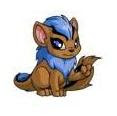Books:1) Paul, Christiane. 2003. Digital art. London; New York, N.Y.: Thames & Hudson.
Comment: The third chapter “Theme in Digital Art” is the first article that gives me the idea of artificial life in digital art. It gives some interesting examples of artificial life which gives me a clear way for researching.
2) Adamatzky, Andrew, and Komosinski, Maciej. 2005. Artificial life models in software. London: Springer-Verlag.Comment: This book is useful. This book present different software that use to make artificial forms in an organized way. It has a very complete introduction of every software, including its background, the concept that runs the program and the projects that have carry out and those will be enforced. For example, some of the works are used for educational and political purposes.
3) Helmreich, Stefan. 1998. Silicon second nature :culturing artificial life in a digital world. Berkeley, Calif.: University of California Press.
Comment: It is a valuable resource because it gets into the life of Artificial Life researchers. It includes how they make use of their works to reflect the doubts about personal and cosmological
meaning. Besides, Artificial Life in Net is discussed in the book.
4) Levy, Steven. 1992. Artificial life :the quest for a new creation. London: Jonathan Cape.
Comment: The author portrays how the scientist of Artificial Life have a new looking of life after pursue their dreams and ambitions. Moreover, it present the use of Artificial Life to solve complicated problems.
5) Magnenat-Thalmann, Nadia, and Thalmann, Daniel. 1994. Artificial life and virtual reality. Chichester: John Wiley & Sons.
Comment: This book is useful although it is a little bit old. It brings in a deeper aspect of the artificial life field. It includes some theories like artificial consciousness, artificial presence, artificial autonomy and artificial perception. It seems difficult to read.
6)“Natalie Jeremijenko: A-trees” in Tribe and Jana, 48-49Comment: 'A-trees' is a good example of artificial life that use to reflect environmental problems.
Magazines Articles:
7) Designing Artificial Life. By: Szpir, Michael, Scientific American, 00368733, Dec2005, Vol. 293, Issue 6 (magazine)Comment: The concept that runs artificial life comes from real life network. Have a brief study of cells or real life may help to understand this topic. It may be quite difficult for me to understand these concepts because I know little about science.
Newspaper articles:8) Play a larger game of artificial life in the new 'Sims 2' ; Best-selling title goes 3-D in sequel; [FINAL Edition]
Steven Kent. USA TODAY. McLean, Va.: Sep 15, 2004. pg. D.04Comment: Artificial Life is not only an artwork, but also related to our entertainment. The 3-D game can be an example to illustrate the relationship of artificial life with our daily life. Furthermore, the figures in the ‘Sims’ can made dead easily by human. Then, what is the value of this kind of life?
9) Worldwide fish go with the digital flow; [FINAL Edition]
A.S. Berman. USA TODAY. McLean, Va.: Sep 6, 2001. pg. D.03
Comment: It’s a funny article. It talks about software which the users can create fish in their PCs. Fishes you create may swim to PCs of other people from different countries. However, the website cannot be displayed. It’s a pity.
Websites:10) ‘Artificial life’, Wikipedia, the free encyclopedia (October 2007)
http://en.wikipedia.org/wiki/Artificial_lifeComment: It is commonly believed that the information provided by Wikipedia is not quite reliable. Nevertheless, it can give some brief ideas of Artificial Life and suggest some websites for researching the topic.
11) Zooland: The Artificial Life Resource (July 2004)http://surf.de.uu.net/zooland/index.htmlComment: A database with many great links and software related to Artificial life.
12) International Society of Artificial Life
http://alife.co.uk/Comment: It seems to be the official site of the society. It includes publications and links related to Artificial Life. Most of its articles are not allowed to read on net if you are not a member of the Society but the links are very useful.
13)NearLife Homepage (2000-2004 Nearlife, Inc.)
http://www.nearlife.com/intro/flash.html
Comment: The page represent a project named ''Visual Fishtank" (http://www.virtualfishtank.com/) which is an example of 3D Artificial Life.
14)Artificial Life and Other Experiments (By Ariel Dolan)
http://www.aridolan.com/Comment: It is a website with artificial life made by Java system. Besides, it allows the viewers to manipulate the option for the system.
 15) Neopets Homepage
15) Neopets Homepage
http://neopets.com/Comment: It is a great example of 2D Artificial Pet website. I have join the network since I were a high school student. Go to the 'Key Visual Materials' to know more about my pet.^^
16)Lotus Artificial Life
http://alife.co.uk/Comment: Another website for Java made artificial life. It also allows the viewers to manipulate the option for the system.
 At the beginning, I was interested in the topic of ‘Genomic Art’, something related to Gene. However, the content of the topic is a little bit ambiguous because it contains real life art, like cells photography, without any manipulation which is not correlated to the course. Then, I wonder if I should start a new topic. Gene in life…Digital Art is an art which is made by hand…Why cannot I study the field of Artificial Life? Making or creating something new is always very interesting. On an upper level, you can create a distinctive life which is unique in the world, it is much more fun!
At the beginning, I was interested in the topic of ‘Genomic Art’, something related to Gene. However, the content of the topic is a little bit ambiguous because it contains real life art, like cells photography, without any manipulation which is not correlated to the course. Then, I wonder if I should start a new topic. Gene in life…Digital Art is an art which is made by hand…Why cannot I study the field of Artificial Life? Making or creating something new is always very interesting. On an upper level, you can create a distinctive life which is unique in the world, it is much more fun!
